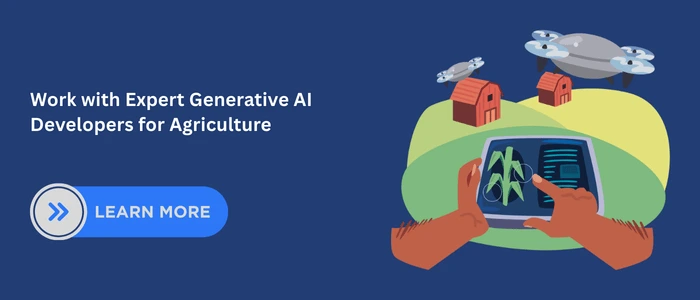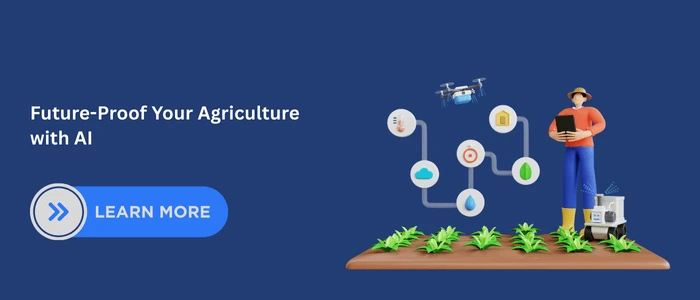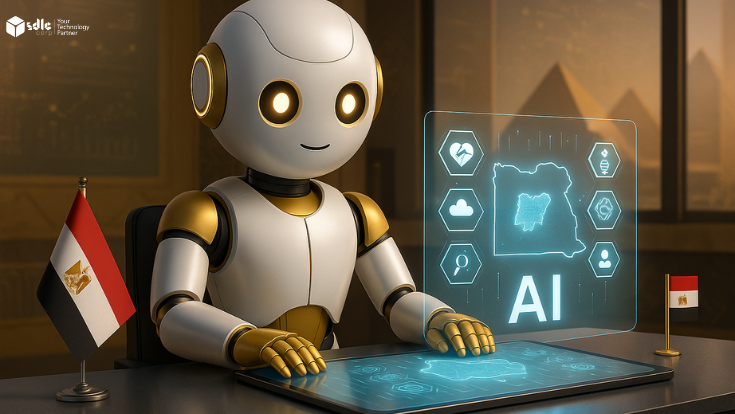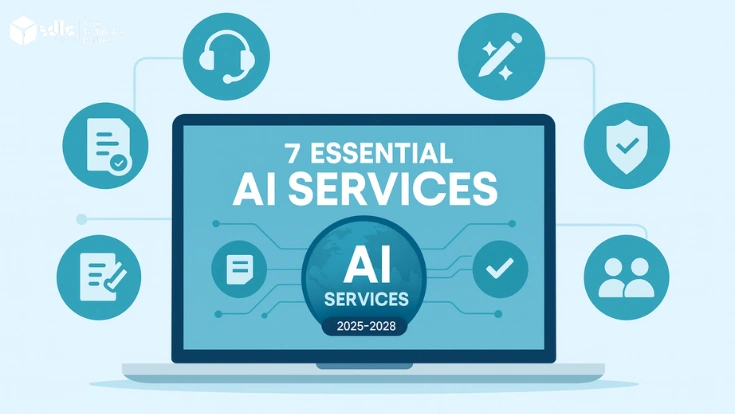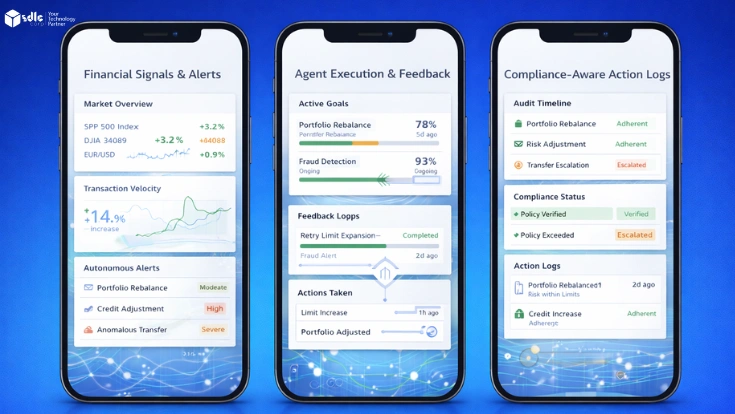Introduction
In recent years, agriculture has faced unprecedented challenges, from erratic weather patterns and soil degradation to water scarcity and fluctuating global markets. Consequently, farmers and agricultural businesses have been seeking innovative solutions to maintain productivity while promoting sustainability. Generative AI for Agriculture, a specialized branch of artificial intelligence, can create new data, generate simulations, and offer tailored recommendations, making it a game-changer for modern farming.
Moreover, unlike traditional AI models that merely predict or classify, generative AI can create entirely new possibilities. If you are unfamiliar with the concept, here’s a detailed guide on What is Generative AI that explains how this technology works and why it’s so transformative.
Role of Generative AI in Agricultural Systems
Agricultural operations generate data from soil sensors, weather stations, equipment logs, and crop monitoring tools. Generative AI can support these systems by summarising field reports, consolidating seasonal data, and assisting with farm management documentation. Many organisations explore Generative AI development services to build models that adapt to agricultural data patterns and seasonal variability.
1.How Generative AI Differs from Traditional AI in Agriculture
To begin with, it is important to understand that traditional AI in agriculture typically focuses on analyzing existing data to identify patterns or make predictions. For example, a traditional AI model might recognize whether a plant is healthy or infected. However, Generative AI for Agriculture takes this a step further by producing entirely new data or generating potential future scenarios.
Furthermore, if there is limited data on how a particular pest affects crops, generative AI can create realistic synthetic images of infected plants, enabling other AI systems to train more effectively. As a result, farmers benefit from highly accurate diagnostic tools even when real-world datasets are incomplete. In addition, generative AI can model the effects of different farming practices under various climate conditions, allowing farmers to test strategies digitally before applying them in real life.
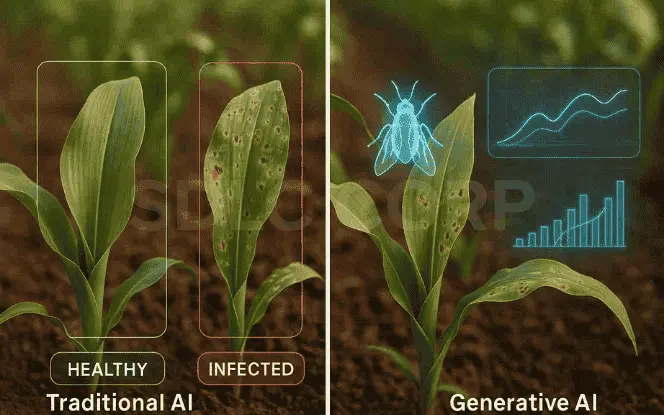
2. Precision Agriculture and Generative AI
In the realm of precision agriculture, timing and accuracy are everything. Consequently, delivering the right amount of water, fertilizer, or pesticide at the right time can make a substantial difference in yields and costs. Generative AI for Agriculture enhances this process by analyzing years of historical data combined with real-time sensor inputs to create simulations that optimize resource distribution.
Moreover, when a field shows variation in soil fertility, generative AI can generate multiple fertilization strategies and predict their outcomes. This simulation-based approach allows farmers to select the most efficient method, reducing waste and maximizing returns. Additionally, because IoT devices continuously feed new data into these models, recommendations stay accurate and relevant throughout the growing season.
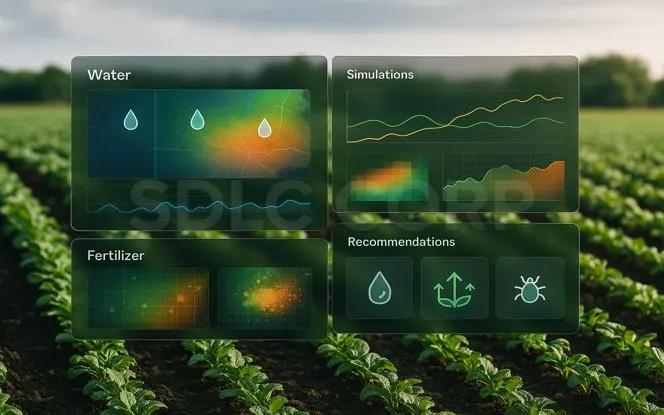
3. Enhancing Crop Breeding with AI Generated Models
Traditionally, crop breeding has been a lengthy and resource-intensive process that can take years to deliver results. However, Generative AI for Agriculture significantly accelerates this timeline by simulating how specific genetic traits perform under different environmental conditions. Consequently, breeders can identify high-potential hybrids much faster.
In addition, generative AI can create synthetic datasets when real-world trials are limited, enabling researchers to train breeding algorithms without waiting for several growing seasons.
4. Pest and Disease Management
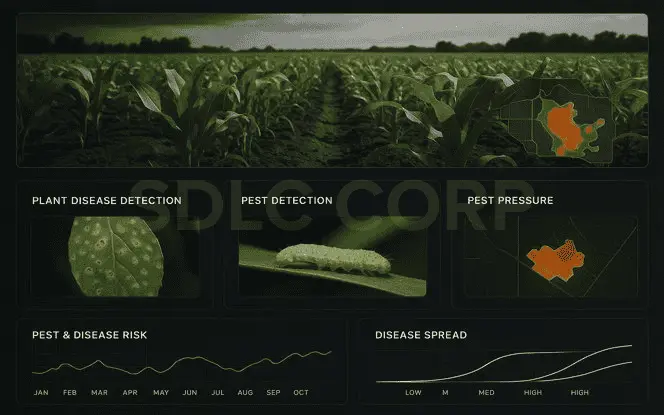
Pests and diseases are among the most persistent threats to agricultural productivity, often causing billions in losses annually. Therefore, early detection and quick intervention are vital. Generative AI for Agriculture helps by producing realistic images of infected plants, filling gaps in datasets, and improving the accuracy of pest and disease detection models.
Moreover, it can simulate the spread of pests under different environmental scenarios, helping farmers anticipate outbreaks before they occur. When combined with drone and satellite imagery, these simulations can pinpoint infestation hotspots, allowing for targeted treatments.
5.Climate Adaptation and Risk Management
Given the unpredictable nature of climate change, farmers must be prepared for a wide range of scenarios. Therefore, Generative AI for Agriculture offers an invaluable advantage by simulating multiple climate conditions. By modeling how crops respond to various temperature levels, rainfall patterns, and soil moisture conditions, farmers can make informed choices about planting schedules, crop varieties, and irrigation plans.
Furthermore, insurance companies can use these simulations to more accurately assess agricultural risks, leading to fairer premiums for farmers. As a result, generative AI not only improves operational decisions but also strengthens financial security.
6.Supply Chain Optimization

From the farm to the market, every stage of the agricultural supply chain can benefit from Generative AI for Agriculture. Consequently, this technology can simulate demand trends, forecast prices, and optimize transportation routes.
Additionally, generative AI can model disruptions such as changes in tariffs, trade agreements, or transportation delays allowing exporters to adapt quickly and avoid losses. For integrated software solutions in agricultural logistics and operations, check out Odoo for Agriculture.
7. Improving Water Management
Water is one of agriculture’s most precious resources, and its scarcity is becoming a growing concern. Therefore, Generative AI for Agriculture can create irrigation schedules tailored to the specific needs of each crop, based on weather forecasts, soil data, and plant growth stages.
Moreover, by integrating satellite imagery, generative AI can detect over-irrigated or under-irrigated areas in real time. Over time, these optimized practices not only save water but also improve yields.
8.Generative AI for Sustainable Farming Practices
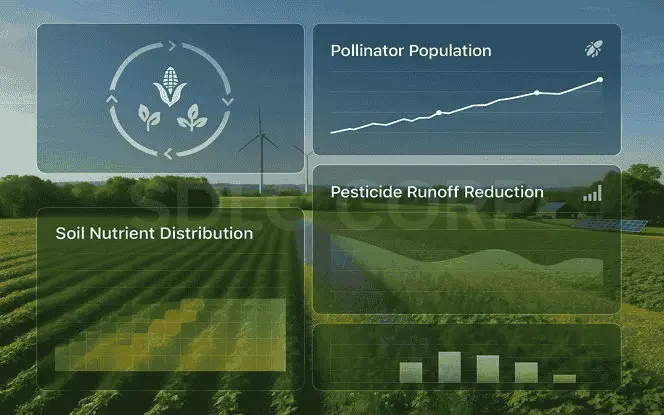
In the push toward sustainability, Generative AI for Agriculture offers numerous advantages. Consequently, it can design farming strategies that reduce greenhouse gas emissions, limit pesticide runoff, and protect biodiversity. For example, it can simulate crop rotation plans that replenish soil nutrients naturally, reducing reliance on synthetic fertilizers.
Furthermore, it can analyze local ecosystems to suggest plant varieties that promote pollinator health. As a result, farms can achieve higher productivity while contributing positively to environmental conservation.
9.Integration with IoT and Smart Sensors
When paired with IoT devices and smart sensors, Generative AI for Agriculture becomes even more powerful. Therefore, real-time data from soil sensors, weather stations, and drones can feed into AI models that simulate immediate interventions. For instance, if soil moisture drops suddenly, AI can recommend precise irrigation adjustments.
Moreover, this integration ensures that AI-generated insights are always based on the most current conditions, leading to more effective decisions.
10.Generative AI in Agricultural Education and Training
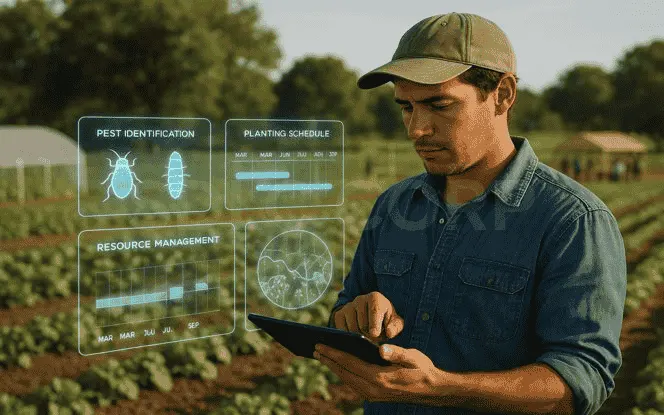
Training the next generation of farmers is crucial. Consequently, Generative AI for Agriculture can create immersive simulations that teach farmers how to handle pests, optimize planting schedules, or manage resources under different climate conditions.
Additionally, such AI-powered training platforms can be accessed via smartphones. Making advanced agricultural education more accessible to rural communities.
11.Policy and Government Support for AI Adoption
Government support plays a vital role in scaling AI adoption. Therefore, Generative AI for Agriculture can help policymakers predict the impact of subsidies, training programs, or technology grants on agricultural productivity.
Moreover, by simulating policy outcomes, governments can identify the most effective strategies for encouraging sustainable AI use in farming.
Crop Planning and Operational Decision Support:
Farm planning requires timely decisions around planting, irrigation, fertilisation, and harvesting. Generative AI can help interpret historical data and generate scenario summaries for planning purposes.
In these cases, a Generative AI consulting company may support evaluation of model reliability, data quality, and responsible usage, especially when recommendations influence operational outcomes.
12.Global Market Impact and Trade Forecasting
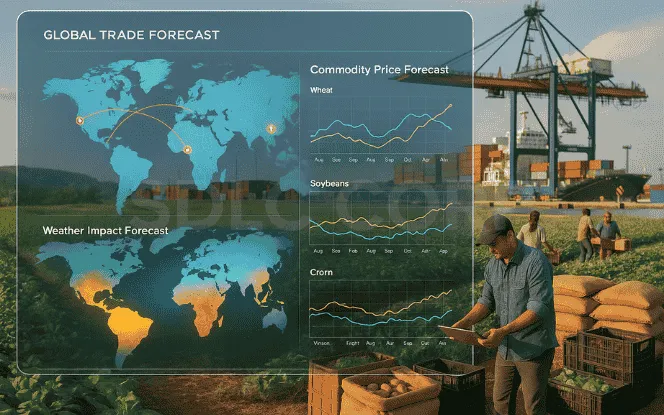
Agriculture is deeply tied to global markets. Consequently, Generative AI for Agriculture can simulate how changes in weather, policy, or trade agreements will impact international crop prices and availability.
Furthermore, by predicting market fluctuations, farmers and exporters can adapt production and distribution strategies to remain competitive.
13.Generative AI for Agricultural Finance and Investment
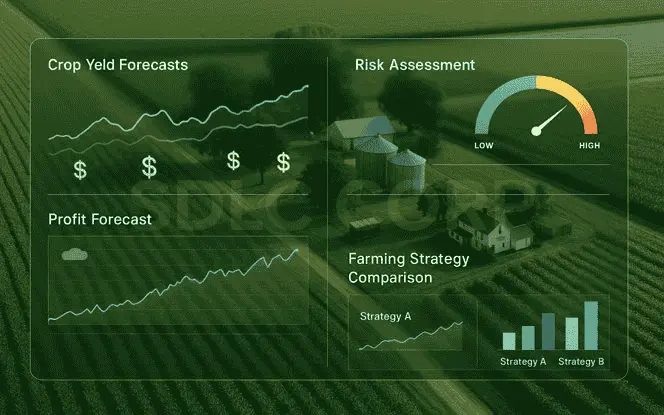
In the realm of agricultural finance, Generative AI for Agriculture offers transformative potential. Consequently, it can analyze vast datasets on crop yields, market trends, weather forecasts, and historical price movements to generate detailed risk profiles for individual farmers.
Moreover, AI-generated simulations can forecast the financial outcomes of different farming strategies. Allowing farmers to choose approaches that maximize returns while minimizing risks.
14.Future Innovations and Cross-Industry Collaboration
Looking ahead, Generative AI for Agriculture will not remain confined to the farm. Therefore, cross-industry collaborations will likely amplify its impact. For instance, by integrating agricultural AI systems with renewable energy grids, farms can optimize irrigation schedules based on solar power availability.
Furthermore, pairing AI-driven crop forecasts with logistics platforms can ensure transport fleets are allocated efficiently, reducing delays and fuel consumption.
15. Integration with Existing Agricultural Platforms
Generative AI tools often complement predictive analytics, monitoring systems, and automation platforms already used in agriculture. Integrating these components requires stable infrastructure and clear data flows. Agricultural technology providers may rely on AI development services to connect generative models with existing platforms while maintaining system reliability and data accuracy.
Conclusion
In summary, Generative AI for Agriculture represents a revolutionary step forward for the industry. Offering capabilities that extend far beyond those of traditional AI. By generating realistic simulations, producing synthetic datasets, and optimizing processes from the field to the global market, it equips farmers with the insights they need to thrive in a rapidly changing world.
Moreover, its applications from sustainable farming and IoT integration to education, policy modeling demonstrate its versatility and impact. Therefore, if you are looking to implement these solutions, consider partnering with experts who can bring your vision to life. You can hire Generative AI developers to build tailored solutions that transform your agricultural operations.
FAQ'S
What is Generative AI for Agriculture?
Generative AI for Agriculture is the application of AI models that can create new data, generate realistic simulations, and provide predictive recommendations for farming operations. It helps in crop yield forecasting, pest and disease management, irrigation planning, supply chain optimization, and sustainable farming strategies.
How does Generative AI improve crop yields?
Generative AI improves crop yields by analyzing historical farm data, weather forecasts, and soil conditions to simulate the most effective farming strategies. It can recommend optimal planting schedules, resource allocation, and disease prevention methods, ensuring higher productivity with fewer resources.
Can Generative AI predict weather patterns for farmers?
While Generative AI does not replace meteorological forecasting, it can simulate how different weather conditions—such as rainfall, drought, or temperature changes—will impact crops. These insights help farmers prepare in advance and make more informed planting and harvesting decisions.
Is Generative AI affordable for small farmers?
Yes, with the rise of cloud-based AI tools and mobile applications, small farmers can access Generative AI solutions at lower costs. Many agritech companies also offer subscription models or government-supported programs to make the technology more affordable.
What role does Generative AI play in sustainable farming?
Generative AI supports sustainable farming by designing crop rotation plans, optimizing water use, reducing chemical inputs, and promoting biodiversity. It helps farmers adopt eco-friendly practices while maintaining or improving yields.

